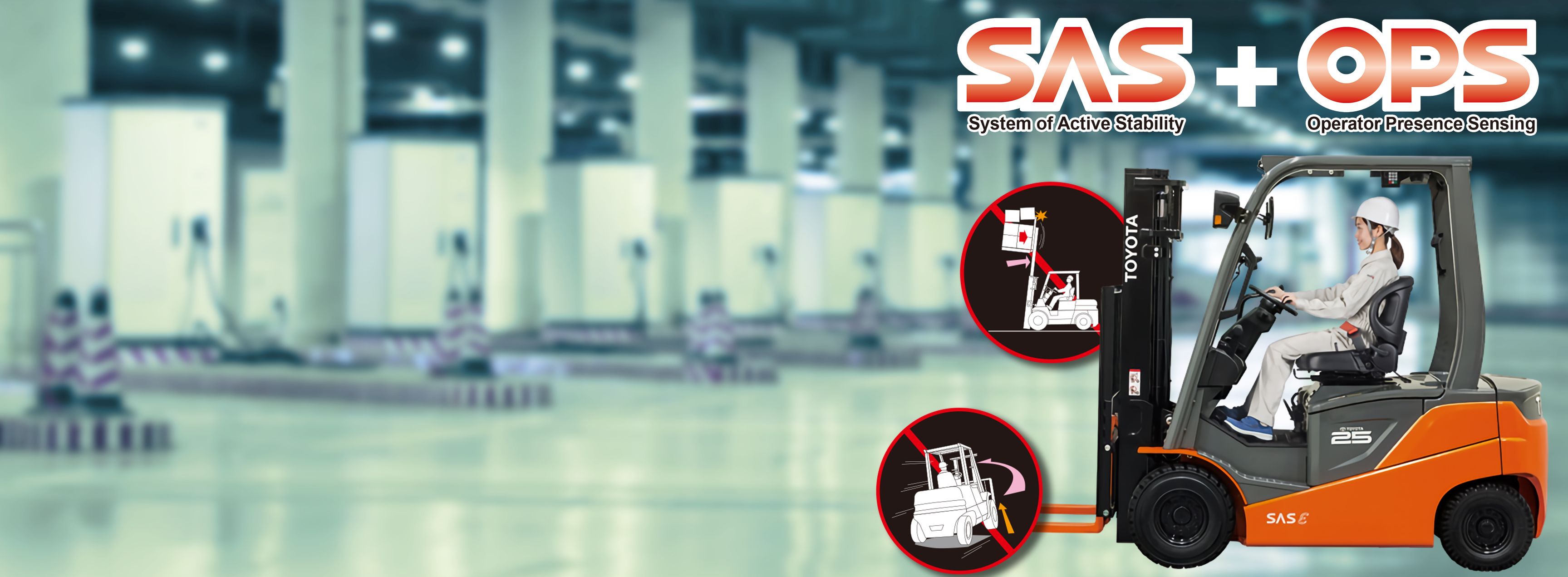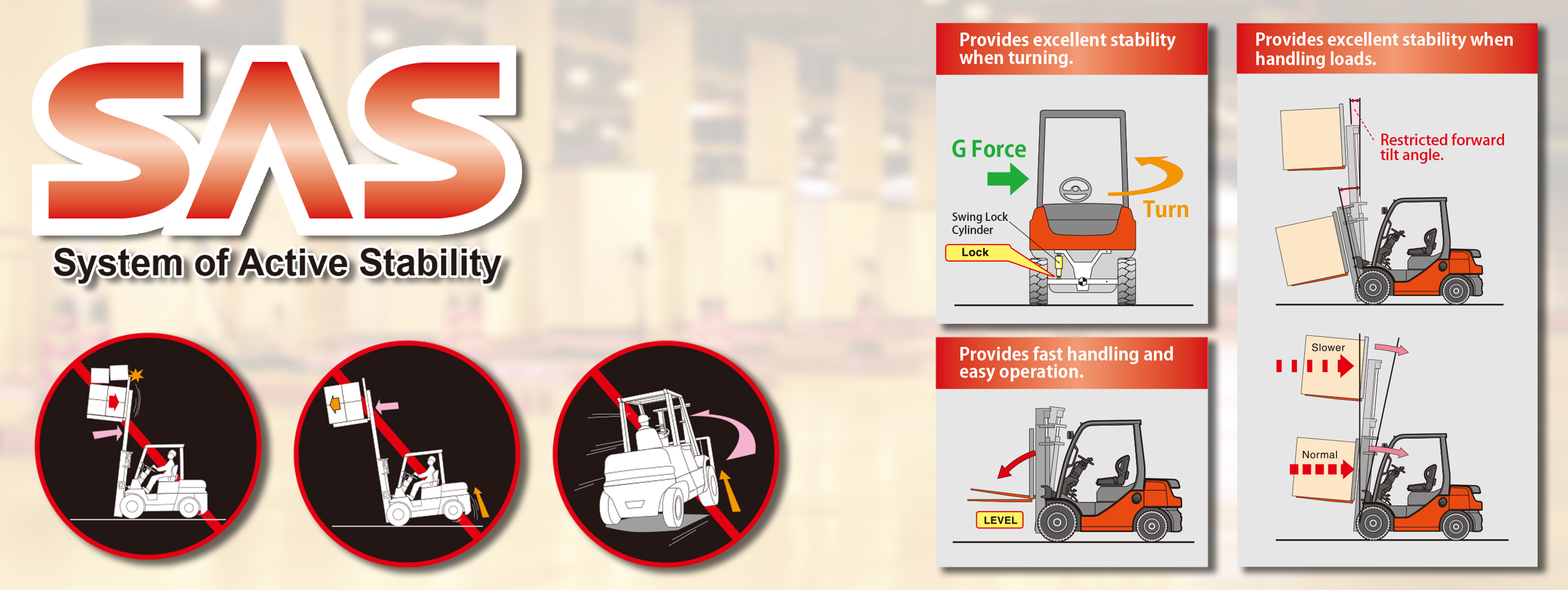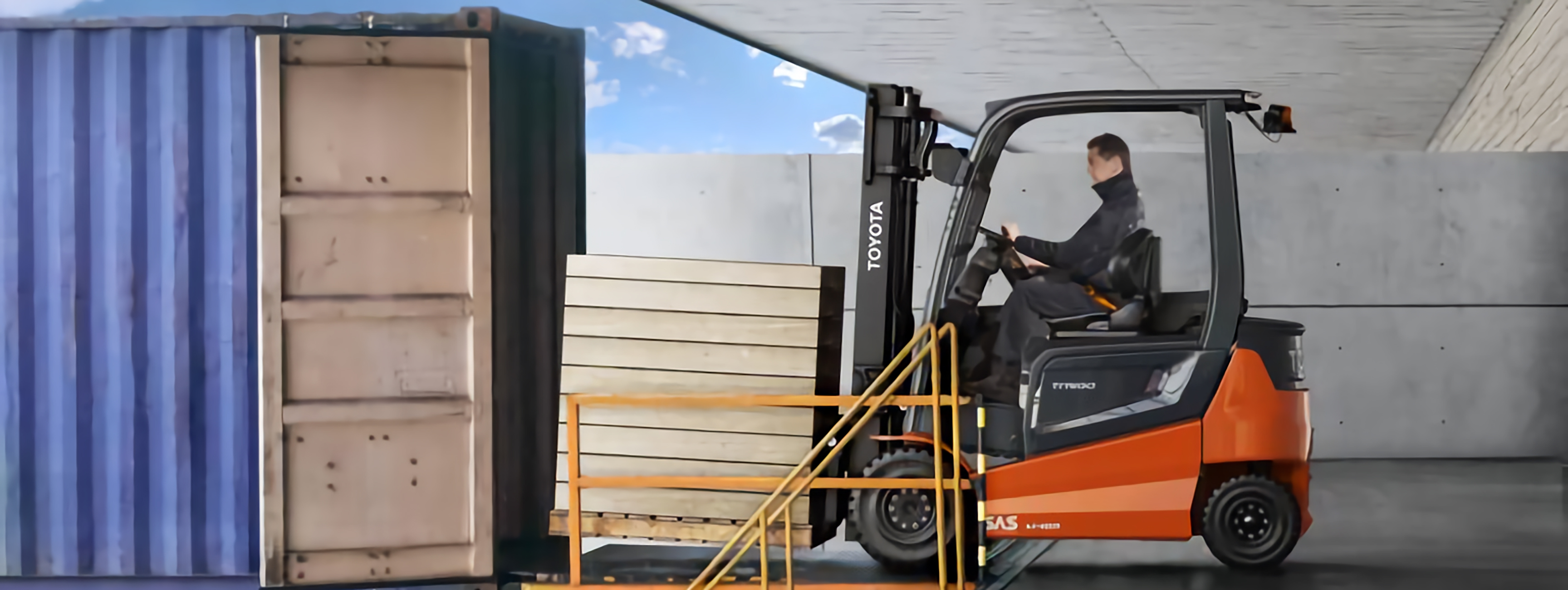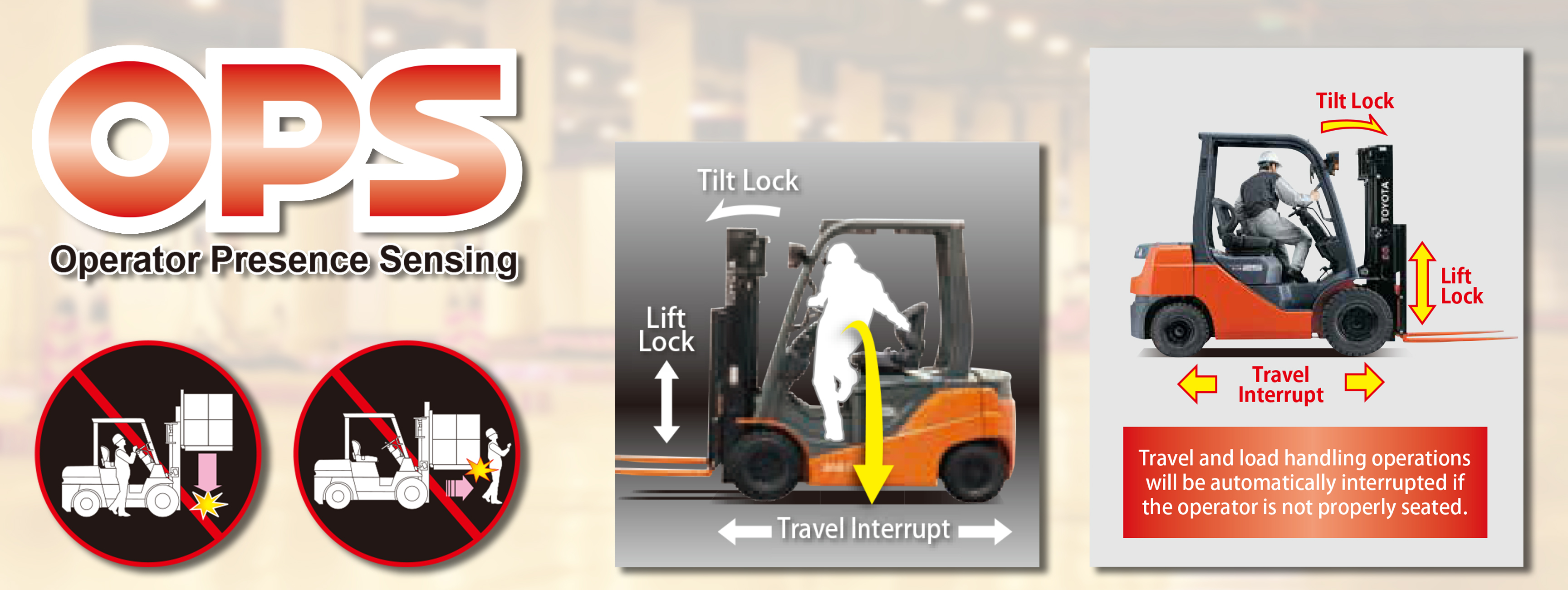
Forklift operator safety training is pivotal for ensuring safe, efficient operations. Unfortunately, even the most effective and reliable forklift operators can still find themselves in situations that put them at risk of tipovers and injury.
To help prevent this unavoidable situation, Toyota has equipped most forklifts since 1999 with an Active Stability System (SAS). SAS is an efficient and effective forklift system for detecting unsafe operating conditions. If a safety hazard is detected, SAS activates one of its two main features which increase the lateral and longitudinal stability of the forklift.

Stabilizer System Rear control serves to increase lateral stability by using a patented swing lock cylinder with rear steering axle. Swing lock cylinder, the forklift stability trace is changed from a regular triangle to a rectangular pattern, which this concept can reduce the risk of the forklift tilting to the side.
When sensing a risk for longitudinal tip over, the Active Mast Function Control System triggers forward tilt control or rear tilt speed control. When activated, the system can control the slope and detect the forward weight and pile height. Furthermore, this system reduces the reserve tilt speed to half of its unlimited speed.
Some of the advantages of an active stability system (SAS) include:
SAS mast control not only monitors the load height and pile position, it also determines the optimized speed and angle. This minimizes mast sway, allowing operators to store or retrieve items at heights faster, resulting in increased productivity with less load or infrastructure damage and lower operating costs.
With SAS Fork Leveling Control, the fork is leveled at the push of a button, making this task quicker for the driver, for more efficient and productive handling of loads, especially at heights. In addition, fork leveling helps operators stack goods correctly and evenly, avoiding damage to goods and racking, reducing costs, resulting in lower operating costs, and less burden and infrastructure damage.

The SAS feature helps protect the operator while turning without compromising productivity through the patented Swing Lock Cylinder system and automatically locks swing motion on the rear axle. This system supports drivers to be more productive by minimizing accidents at work.
Reducing the physical strain on the driver by offering a comfortable driving position will have a positive impact on productivity and health. The SAS Steering Synchronizer automatically aligns the steering wheel knob with the rear wheel position which helps a more ergonomic driving position in the most efficient way for safe and productive operation. Supported by the Swing Lock Cylinder feature, it offers superior stability and driver comfort in all conditions.

Not only the SAS feature, Toyota also provides the Operator Presence Sensing (OPS) feature found in the operator's presence sensing system which is standard equipment on all models. This system uses a switch sensor mounted on the operator's seat or floor to detect the presence of the operator. If the operator is not in the normal operating position, the travel power is interrupted and the load handling operation is stopped automatically. The “Operator Presence Sensing System” or simply “OPS” was introduced on all 7-Series sit down forklift products, in response to new safety standards.
The OPS controller monitors the seat switch status to determine if the operator is seated properly. If the seat switch status changes from "closed" to "open" for more than 2 seconds during powered travel; the OPSS controller will force the transmission to be "neutral" and the powered trip is interrupted. Whenever the OPSS system is active, the OPSS light flashes on the operator's screen.
After the operator returns to the seat and the seat switch state is "closed" for more than 1 second, the OPS controller ensures that the directional control lever is in the neutral position and not in the FWD or RWD direction, the OPSS controller will no longer interfere with powered travel. This is commonly known as the "Static Return to Off" (SRO) function.
Source : Toyotaforklift.com

When working at heights, boom lifts are the right machinery to use. Th...
Read More
Currently, companies must carry out the production, logistics, and dis...
Read More
Forklifts are useful for transporting goods in factories, warehouses,...
Read More
UPS (Uninterruptible Power Supply) is essential equipment to support c...
Read More